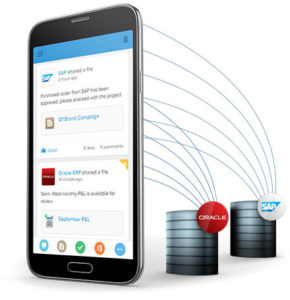For companies such as Cisco, the Internet of Things represents a wealth of untapped riches. The company, which recently reported a 7 percent year-over-year jump in revenue for the quarter ending in January, attributed some of its growth to the Internet of Things — or, as the CEO John Chambers referred to it, the Internet of Everything. He recently said that the Internet of Everything will propel Cisco into becoming a leading IT solutions provider.
Indeed, there is no shortage of data highlighting the potential this technology has for the economy. IDC recently noted that nearly 15 billion IoT-connected devices will be sold this year.
So demand is there, as is supply. However, one piece may or may not be missing, depending on whom you ask: the back-end capacity to handle the information these devices will generate. Specifically, can today’s contact centers handle the influx of information that these devices will emit?
SMS in Use
In many ways, the IoT is here, co-existing happily with consumers, albeit in a simple form.
According to Bernard Gutnick, senior director of the Avaya Engagement Evangelist Team, one real-world example is the use of emergency keys on phones. “Once the key is pressed, if a code is not entered within two minutes, it will automatically connect to dispatch and begin capturing video in real-time,” he told CRM Buyer.
“As these applications and use cases proliferate, the IoT will let the customer decide what form of communication will be best for them based on current circumstances,” he continued. “SMS is a likely candidate since most contact centers, if not all, have SMS capabilities. SMS, as a personal communication form, is immensely popular.
“The call centers would then use the same business rules that apply to phone calls to prioritize and intelligently route IoT requests to the appropriate representative,” he said.
Too Early in the Cycle
Granted, “it is very early in the cycle to be able to say definitely that call centers are ready to handle the IoT,” said James Quin, CDM Media senior director of content and c-suite communities.”Businesses are kicking the tires, but despite the pushing of a number of notable vendors, few are diving in with broadscale implementations at this point,” he told CRM Buyer.
That said, he noted that the point of IoT-type technologies is to stream data directly to intelligent systems that can aggregate, collate, and act upon the information independently of human interaction — or, at the very least, with minimal human interaction.
“As a result, the impact on call centers and call center agents should be a net positive; while more data will be coming to the company, the systems that it comes to will handle at least first-level processing of the data, lessening the workload on the people in the equation,” Quin said.
Advanced Functionality
The IoT, though, is not destined to merely serve as a conduit for notifying appliances that they need service calls.
“When it is developed to its full potential, great things could happen,” said Josh Plaskoff, director of learning and technology service development at HighPoint Global.
“Imagine if cars had sensors with the ability to detect potholes on city streets and record routes to work,” he told CRM Buyer. Agencies armed with this data would be more empowered to take proactive and individualized approaches to serving citizens. For example, they could text a warning about a pothole on their normal work route and send a crew out to fill it without the need for a call from a concerned citizen.
“If the agency were contacted, representatives could provide assistance, using multi-sourced data and predictive models, to help with better decision-making or to avoid inconveniences — for example, warning that in a few months, construction will start on that normal work route,” Plaskoff remarked.
Not a Simple Change
This will not be a simple change however, Plaskoff acknowledged.
“It will require a much more powerful digital infrastructure capable of complex data analysis and predictive modeling,” he said. It will also require a more strategic approach to integrating governance, security, technology investments, data targets, communications, processes, and organizational change. Interdepartmental teamwork, collaboration, and communication will be a must,’ and even cross-agency connections may need to be strengthened to gain the most benefit.”
In short, he said, “The potential for helping with productivity, cost-reduction, and responsiveness is tremendous. At the same time, the change necessary to achieve it should not be ignored.”






















































